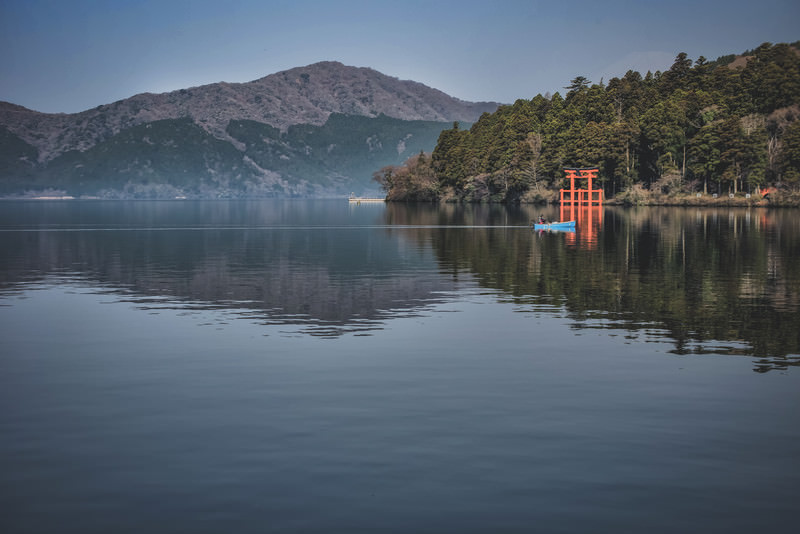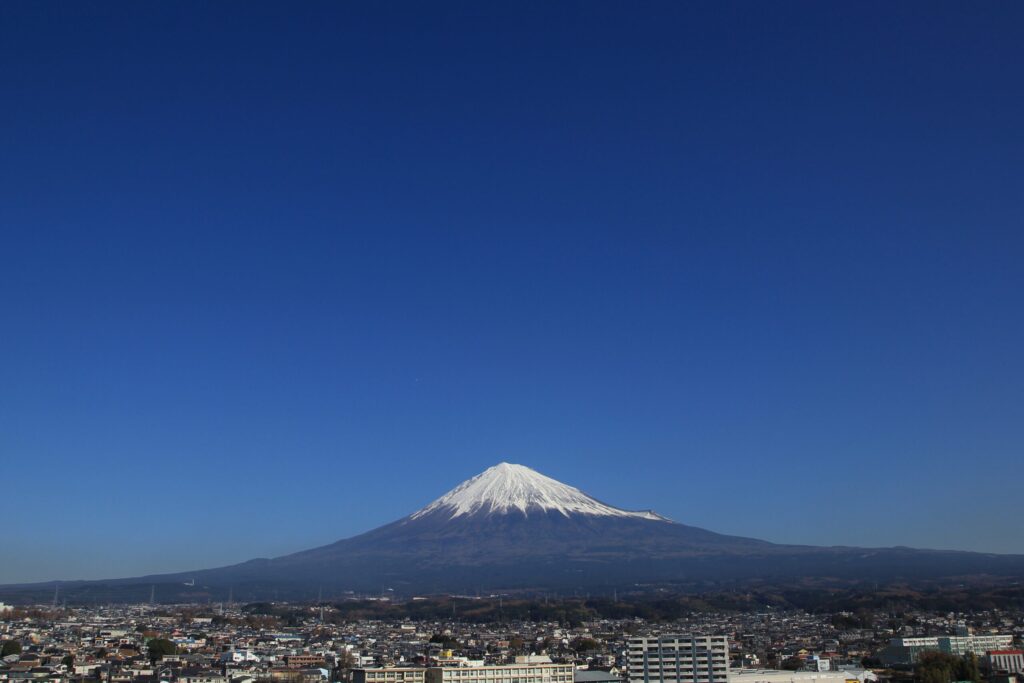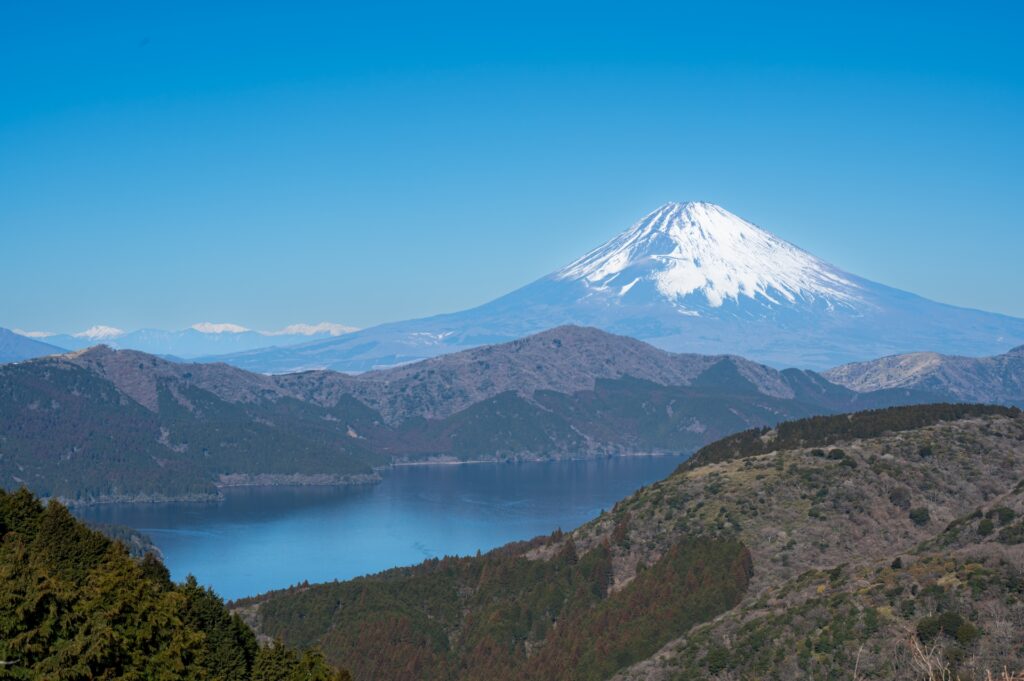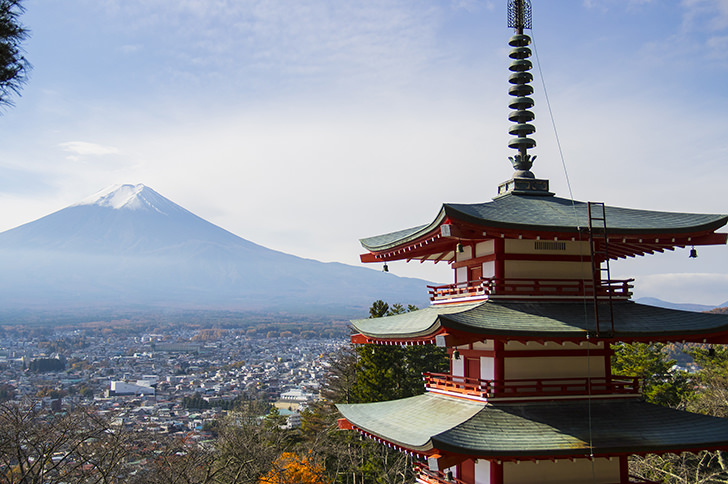- Ready for Japan? Fuji Dreaming Starts Here—A Complete FAQ for Fujinomiya vs Hakone Travel
- What’s the Big Difference Between Fujinomiya and Hakone for Seeing Mt. Fuji?
- How Do I Get to Fujinomiya and Hakone? What Are the Real-World Differences?
- What’s It Really Like to Stay in Fujinomiya? What Should I Expect?
- Is Hakone Really All About Hot Springs? How Do I Make the Most of a Visit?
- Do I Need to Tip in Fujinomiya or Hakone? How Do Japanese Hospitality Practices Work?
- How Can I Get the Best Mt. Fuji Views in Both Regions? When’s the Best Season?
- What Kind of Activities Can I Book in Fujinomiya vs Hakone?
- How Do I Choose Accommodation? Is Agoda or Expedia Better for Mt. Fuji Region Hotels?
- Are There Important Cultural or Religious Differences to Know About?
- How Do Weather and Seasons Affect My Trip? What Should I Pack?
- Should I Choose Fujinomiya or Hakone Based on My Travel Style?
- What Are the Top Insider Travel Tips for Fujinomiya and Hakone?
- Final Thoughts: Fuji Your Way, with Smart Booking and Local Touches
Ready for Japan? Fuji Dreaming Starts Here—A Complete FAQ for Fujinomiya vs Hakone Travel
Are you dreaming of gazing at majestic Mt. Fuji, feeling the stillness of Shinto shrines, or maybe you crave Japanese hot springs bubbling under forested hills?
If you’re planning your first trip to Japan, it’s easy to get lost between names like Fujinomiya and Hakone—a conundrum I hear about almost every week in my decade as a professional English-speaking guide based in Japan.
Each region promises a “Mt. Fuji experience,” but what’s authentic, what’s convenient, and how do you choose between adventure, culture, and comfort?
Let’s cut through the confusion.
In this extensively updated expert guide, you’ll discover the core differences between Fujinomiya and Hakone, with essential insider tips the forums and generic blogs always miss.
You’ll get practical answers to the real questions savvy travelers are asking—on Reddit travel threads, TripAdvisor, and even in on-the-ground tours.
Expect targeted guidance based on lived expert experience—not copy-pasted rankings or one-size-fits-all answers.
And for the best hotels and deals? We’ll compare Agoda and Expedia, giving you actionable strategies to book smarter for your Japan dream trip.
Let’s dive straight into what every international traveler needs to know—so you can plan with confidence and return home with stories you can’t stop sharing.
What’s the Big Difference Between Fujinomiya and Hakone for Seeing Mt. Fuji?
The rivalry is real! On the one hand, Fujinomiya is the “front door” to Mt. Fuji itself—a spiritual center, steeped in Shinto traditions and the drama of climbing Japan’s sacred peak.
On the other, Hakone offers cinematic lake views, world-class hot spring ryokan, and a lush portfolio of attractions, all with the iconic Fuji silhouette looming on the horizon (weather permitting!).
But there’s much more below the surface.
Let me break it down, drawing from my own experiences leading hundreds of travelers through both regions since 2015:
Fujinomiya gives you the closest approach to Mt. Fuji’s core—think chilly dawn air at the Fifth Station, the smoky incense of Fujisan Hongu Sengen Taisha (Mt. Fuji’s head shrine), and encounters with real local climbers and food artisans.

It’s rustic and deeply “Japanese.” Tourist crowds are far fewer than in Hakone or Kawaguchiko.
You’ll need to plan logistics carefully, but the reward is authenticity: greet the day with a bowl of Fujinomiya yakisoba, prepare for a summit attempt, chat with mountain gear shopkeepers, and perhaps sit quietly amidst ancient cedars.
Hakone, meanwhile, is built for relaxation and multi-generational fun. Expect classic resorts, playful pirate boats on Lake Ashi, surreal open-air art museums, and the sort of hot spring indulgence that’s easy to dream about from Paris or New York.
It’s expertly served by Tokyo’s superb train network—and, frankly, feels like a “holiday from your travels.” For me, as a guide, it’s where my clients fall in love with the springtime mists, the scent of cypress baths, and lazy views of Fuji reflected in blue water.

So: climb or soak? Shrine or museum? Local flavor or global comfort? That’s the heart of the choice.
How Do I Get to Fujinomiya and Hakone? What Are the Real-World Differences?
Let’s cut to the chase: Hakone is extremely easy to access from Tokyo—about 90 minutes by direct train from Shinjuku, with English-friendly stations, clear signage, and the famous Hakone Freepass making hop-on, hop-off sightseeing a breeze.
If you’re juggling a family or hauling jetlag, this matters!
Fujinomiya is a little more “adventurous.” You’ll either take the Tokaido Shinkansen to Mishima, then transfer to a local JR train or bus (expect about 2.5–3 hours from Tokyo Station), or come via Shizuoka.
In my own experience, this journey feels much more “off the beaten path”—buses run on rural timetables, and you should expect some Japanese-language signage, but with free Wi-Fi and Google Maps, you can manage smoothly.
Pro tip: For climbers or anyone serious about experiencing Fuji up close, the extra travel effort to Fujinomiya is 100% worth it.
But if you’re tight on time, or nervous about rural navigation, Hakone wins for convenience.
What’s It Really Like to Stay in Fujinomiya? What Should I Expect?
Imagine waking early in a guesthouse operated by a local family, the scents of homemade miso soup and fresh rice in the hallways.
You’ll notice the air is crisp—Fujinomiya sits at the base of the mountain, meaning even summer mornings can be surprisingly cool.
Most visitors stay in simple inns and minpaku guesthouses, rather than big hotels. This is the perfect place to use Agoda for hunting hidden deals, since Agoda’s listings for smaller Japanese towns are often cheaper and feature last-minute discounts even Booking.com can’t match.
Don’t expect room service or infinity pools. Instead, look for traditional tatami rooms, futon bedding, and the unique charm of interacting with the owners.
Some properties double as base camps for climbing Mt. Fuji—they’ll even organize gear rental or early transport to the Fifth Station!
If you’re a foodie or seeking local culture, stroll around the Fujinomiya city area near the station. The street outside Fujisan Hongu Sengen Taisha shrine is packed with old-school noodle shops, where you can try Fujinomiya yakisoba (a surprisingly smoky stir-fried noodle), and sample regional milk and sweets.
Pro tip: Before climbing Fuji, drop into one of the mountain gear shops near the bus terminal—they’re used to foreign travelers, and can help you rent anything from rain jackets to climbing sticks.

Is Hakone Really All About Hot Springs? How Do I Make the Most of a Visit?
In a word? Yes—and no.
Hakone’s onsen (hot springs) culture is legendary, but there’s far more to do than just soak. Since guiding here, I’ve come to appreciate how Hakone blends family-friendly attractions (think pirate ships, wild animal parks, and cable cars) with serene, contemplative spots (like the Hakone Open-Air Museum or half-hidden lakeside shrines).
Most travelers choose a ryokan stay—Japanese inns featuring tatami-matted rooms, fluffy yutaka (robes), in-room multi-course kaiseki dinners, and steaming baths fed by natural springwater.
The range is immense: you’ll find one-night guesthouses under $60/night, midrange hotels around $100–200, and luxury properties with private onsen overlooking the mountains.
Agoda works reliably for price hunting here—especially flash sales, no-prepayment reservations, and filter-rich searches for English-friendly properties.
Expedia also stands out for volume—if you want to compare big-name chains or desire a package flight+hotel deal (often with free cancellation), Expedia’s listings in Hakone are extensive.
Quick warning: weekend rates in peak seasons (especially cherry blossom or autumn leaf time) can double. Always book ahead if your dates are fixed!

Do I Need to Tip in Fujinomiya or Hakone? How Do Japanese Hospitality Practices Work?
You do not need to tip in Japan—in fact, your attempt may confuse or even embarrass hotel, restaurant, or taxi staff.
Japanese service culture is rooted in omotenashi: the principle of discreet attention and selfless hospitality.
In hundreds of visits over the years, I’ve never seen a single tip accepted, even when American clients tried to slip cash to a hardworking innkeeper or chef.
If you wish to show gratitude, a small wrapped souvenir from your country or a friendly thank you (in Japanese: arigatou gozaimasu) is more than enough.
If you join a mountaineering tour or book a private guide for the Fuji ascent, a tip is not expected—but you can write a heartfelt review online or perhaps give a little omiyage (gift), such as local sweets or a fridge magnet.
In hot spring ryokan, you might see Japanese guests giving a small envelope (called “goshugi-bukuro“) to staff at the end of a stay, but this is mostly reserved for special occasions. Relax and enjoy world-class care: the price you see is the price you pay.
How Can I Get the Best Mt. Fuji Views in Both Regions? When’s the Best Season?
Let’s be brutally honest: catching “the perfect Fuji view” can be as much luck as planning.
The mountain often hides behind clouds, especially in summer afternoons.
If you’re determined, here are my distilled local secrets after years with amateur photographers and Fuji fanatics:
In Fujinomiya, the best direct views are from the approach to the Fifth Station and, for early risers, from the precincts of Fujisan Hongu Sengen Taisha at sunrise.
In winter and early spring, the air is clearest—dress warm!
Hakone’s top vantage points are from Lake Ashi (Pirate Ship or lakeside promenades) in the early morning, and from the cable cars or mountainside museums on crisp, dry days.
Expect the mountain to appear most dramatic in the cool months of November–March.
My favorite? An impromptu hanami (cherry-blossom viewing) picnic by the lakeside in late March, Fuji glittering beyond pink blooms.
What Kind of Activities Can I Book in Fujinomiya vs Hakone?
Fujinomiya is, first and foremost, about mountain adventure and deep cultural encounters.
Think: summit or shorter hiking, shrine visits, renting gear, enjoying small-town festivals, or sampling hyper-local food.
Many travelers miss out on the region’s farm-themed experiences—dairy tours, picking fresh fruit, or joining local tea ceremonies. These are easily booked through local tourism offices, though English support may be variable.
Hakone, by contrast, feels like a “choose your own adventure” destination.
Ride the iconic Hakone Pirate Boat, cable cars, or the scenic Tozan Railway.
Explore volcanic valleys and try the (now-famous) black eggs, said to add years to your life.
Or, for families and art lovers, try the remarkable Hakone Open-Air Museum—Japan’s loveliest alfresco collection of modern sculpture, with a surprise: many pieces positioned directly for Fuji views!
There’s even a wild animal safari park—true story, I once guided an artist couple here who spent an entire day sketching lemurs and foxes amid Fuji views.
How Do I Choose Accommodation? Is Agoda or Expedia Better for Mt. Fuji Region Hotels?
This is the million-yen question.
My insider tip (from hundreds of bookings for global clients): Always check Agoda first for Japan trips.
Their Asia-centric business model gives them strong connections to local inns and guesthouses, meaning I routinely find up to 40% discounts versus Western platforms.
Agoda also offers robust “no prepayment” options and real-time mobile deals—especially useful for last-minute changes (Fuji weather can force rapid plan pivots)!
Pro Tip:
Agoda often shows cheaper rates than official hotel or airline websites because they use part of their commission earnings to subsidize prices. Instead of spending more on ads, they pass the savings on to you—a smart strategy, really.
That’s why booking a flight + hotel package instead of just a hotel alone can sometimes unlock surprisingly steep discounts—up to 40% off in some cases.
Expedia, on the other hand, stands out for total volume. If you want recognizable hotel chains (Hilton, Hyatt) or package deals (flight+hotel+insurance in one click), Expedia’s filters and customer service are reliable and ultra-English-friendly.
When I organize luxury ryokan trips in Kyoto or Hakone, my clients often appreciate Agoda’s intuitive search tools—especially the map views, fine-tuned filters (breakfast, onsen, family rooms), and detailed property images.
But for a big family or anyone nervous about cancellation policies, Expedia’s brand muscle and guaranteed English support can deliver real peace of mind.
My approach? Search both—then compare total cost including cancellation policy, taxes/fees, and whether breakfast or dinner is included.
As of 2024, Rakuten Travel remains the gold standard inside Japan, but it’s tough for foreign travelers due to limited English, complex payment flows, and occasional issues with non-Japanese cards. I never recommend it to my international clients for that reason.
You can check latest Fujinomiya and Hakone hotel deals here on Agoda—or compare Expedia’s best-value listings here.
Pro tip:
Filter by “Free Cancellation” and grab deals with breakfast included, since dining options can close early in smaller towns.
Related:How to Book a Hotel in Japan: Step-by-Step Guide + Best Sites (2025)
Related:Best Websites for Booking Hotels in Japan (2025): Agoda vs. Expedia vs. Rakuten
Are There Important Cultural or Religious Differences to Know About?
Absolutely. Having lived and guided in both, I can tell you the “ambience” is strikingly distinct.
Fujinomiya is deeply shaped by its heritage as the entry-point for Fuji worship—a tradition dating back 1,200 years. Pilgrims still come to meditate at the shrine, and local shops sell arcane talismans, lucky charms, and, at times, sacred “Fuji water.”
During climbing season, you’ll encounter groups chanting or in ceremonial white robes.
Hakone, however, grew as a “traveler’s rest” along the old Tokkaido highway from the Edo period, and its onsen towns have been pampering guests for centuries.
You’ll feel echoes of Meiji-era nostalgia in the preserved post-towns, with a playful, welcoming vibe: much is designed for tourists and playful discovery, rather than solemn ritual.
That said, don’t miss Hakone Shrine—half-hidden in the lake mists, its massive red torii makes a show-stopping photo spot.
How Do Weather and Seasons Affect My Trip? What Should I Pack?
The shadow of Fuji means microclimates rule!
In Fujinomiya, summer brings heavy rain showers and dramatic mountaintop clouds. If you’re climbing, temperatures at the Fifth Station can be 15°C (30°F) colder than the city—pack for winter, even in July!
In winter, the region sparkles with snow, and traffic to the climbing trailheads can be restricted.
Hakone, at a lower altitude, is milder but quickly chilling at sunset. Fog rolls up from Lake Ashi; pack layers, a rain jacket, and nonslip shoes for museum gardens or forest walks.
Key tip: Avoid Japanese public holidays (especially Golden Week in early May and Obon around August 15th), when trains, hotels, and roads are jammed solid.
For peak Fuji viewing, November through March brings the clearest air—but late spring (early April) is lush and brightly colored.
For climbing, plan between July and early September only—outside these windows, the summit trails are closed for safety.
Should I Choose Fujinomiya or Hakone Based on My Travel Style?
Here’s my honest breakdown, after years guiding all kinds of travelers:
Choose Fujinomiya if:
- You genuinely want to climb Mt. Fuji (even if just up to the Fifth or Sixth Station).
- Authentic, “local Japan” appeals—think quiet backstreets, regional food, old customs.
- Your budget is tight, and you don’t require 4-star hotels or international restaurants.
- You hope to practice Japanese, or want meaningful small-town encounters.
Choose Hakone if:
- Your time is limited; you need easy, English-friendly access from Tokyo or Yokohama.
- You’re a family, couple, or group—ready for hot springs, museums, and varied fun.
- Ray-traced Fuji views over water are a top priority (remember: weather is a wild card).
- You like variety—one day a gallery, the next day a hiking trail, then an onsen bath.
For best-of-both-worlds? Pair a night in Hakone (onsen, lake, museums) with two nights in Fujinomiya for the mountain and shrine experience.
What Are the Top Insider Travel Tips for Fujinomiya and Hakone?
For Fujinomiya:
- Confirm transportation: Check bus schedules in advance, especially late or off-season.
- Visit the shrine early morning for quiet rituals and sunrise colors.
- Look for local festivals—summer matsuri with lanterns and processions are magical.
- Buy specialty snacks (like Mt. Fuji milk bread or sweet sake) to bring home.
For Hakone:
- Grab a Hakone Freepass—unlocks trains, boats, buses, and funiculars, saving you hours and yen.
- Start Fuji viewing in the morning before clouds gather.
- Alternate indoor/outdoor plans; sudden rain is common year-round.
- Pre-book onsen ryokan during busy seasons. Places fill up 3–4 months ahead.
- For art lovers, plan a half-day (not just an hour) at the Hakone Open-Air Museum—it’s worth it!
Final Thoughts: Fuji Your Way, with Smart Booking and Local Touches
Whether you crave Fuji’s summit or its water-reflected presence, Japan gives you marvelous options for every style and budget.
Fujinomiya is for adventurers and seekers.
Hakone is for those who want to soak, play, and glimpse Fuji’s timeless beauty without a high-altitude scramble.
Need a hand with booking?
Check Agoda’s curated Mount Fuji hotels and ryokan for unbeatable deals, or scroll through Expedia’s up-to-date Hakone hotel inventory—both accept international cards and offer English support 24/7.
Travel smart, pack with purpose, and savor every brush with the sacred mountain—let Fuji’s story become yours.
How to Book a Hotel in Japan: Step-by-Step Guide + Best Sites (2025)
Best Websites for Booking Hotels in Japan (2025): Agoda vs. Expedia vs. Rakuten
How to Get from Tokyo to Mt Fuji? Fastest, Cheapest & Easiest Ways (Full Guide)


